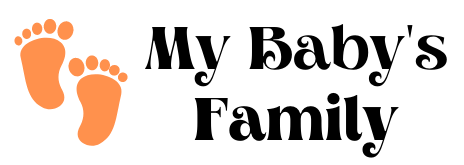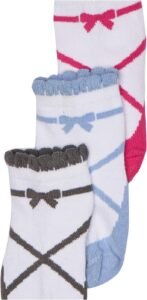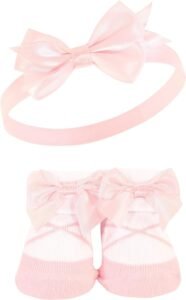In today’s fast-paced world, parents are constantly seeking ways to provide the best care for their little ones. One aspect that often goes overlooked is the importance of baby shoes. Research has shown that proper footwear not only supports healthy foot development but also aids in balance and coordination.
With a wide variety of options available, it can be overwhelming for parents to navigate the world of baby shoes. This article aims to provide valuable insights on when to start using baby shoes, understanding sizes, choosing materials, and more, helping parents make informed decisions to ensure their baby’s comfort and well-being.
Key Takeaways
- Properly fitted baby shoes support healthy foot development.
- Ill-fitting shoes can hinder natural foot development and lead to future foot problems.
- Barefoot walking strengthens foot muscles, improves balance, and enhances sensory feedback.
- Shoes should mimic the barefoot experience as closely as possible.
The Importance of Baby Shoes
The importance of providing properly fitted baby shoes cannot be overstated, as they play a crucial role in supporting the healthy development of a child’s feet. When it comes to choosing baby shoe brands, it is essential to prioritize quality and fit over style. Ill-fitting shoes can hinder a child’s natural foot development, leading to potential foot problems in the future.
One of the benefits of barefoot walking for babies is that it allows their feet to develop naturally. Going barefoot helps strengthen their foot muscles, improves balance, and enhances sensory feedback. However, there are times when shoes are necessary to protect their delicate feet from potential hazards. In such cases, it is important to choose shoes that mimic the barefoot experience as closely as possible.
When selecting baby shoes, it is crucial to consider the material, flexibility, and support they provide. Soft, breathable materials such as leather or canvas are recommended, as they allow the feet to breathe and move comfortably. The shoes should have a flexible sole that mimics the natural movement of the foot, allowing for proper foot development. Additionally, shoes with a wide toe box ensure enough space for the toes to move and spread naturally.
When to Start Using Baby Shoes
Parents often wonder at what age they should begin putting shoes on their babies, as the appropriate time to start using baby shoes varies depending on the child’s developmental stage and the specific needs of their feet. It is important to consider the benefits of going barefoot before introducing shoes to infants.
Here are some key points to consider:
Baby shoe brands: There are numerous baby shoe brands available in the market, each offering different features and designs. It is essential to choose a reputable brand that provides proper support and comfort for your baby’s feet.
Developmental stage: Babies typically start learning to walk between 9 and 18 months. Before they begin walking, it is best to let them go barefoot as much as possible. This allows their feet to develop naturally and strengthens the muscles necessary for walking.
Protection and safety: Once your baby starts walking outdoors or on rough surfaces, it is advisable to introduce shoes to protect their feet from sharp objects and extreme temperatures.
Flexibility and breathability: Look for baby shoes that are flexible and breathable. This allows for natural foot movement and prevents excessive sweating, reducing the risk of fungal infections.
Understanding Baby Shoe Sizes
When determining the correct size for your baby’s shoes, it is important to understand the various measurements and conversions, as well as consult size charts provided by reputable baby shoe brands. Baby shoe sizes can vary significantly between brands, so relying solely on the age of your baby may not always be accurate. To ensure a proper fit, it is essential to measure your baby’s feet and refer to size charts for the specific brand you are interested in.
To help you navigate the world of baby shoe sizes, here is a handy conversion table that compares the most common size systems:
| US Size | UK Size | EU Size | Foot Length (inches) | Foot Length (cm) |
|---|---|---|---|---|
| 1 | 0 | 16 | 3.5-3.625 | 9-9.2 |
| 2 | 1 | 17 | 3.75-4 | 9.3-10.2 |
| 3 | 2 | 18 | 4.125-4.375 | 10.3-11.1 |
| 4 | 3 | 19 | 4.5-4.625 | 11.2-11.8 |
| 5 | 4 | 20 | 4.75-5 | 11.9-12.7 |
In addition to length, it is also crucial to consider the width of your baby’s feet. Some brands offer different width options, such as narrow, regular, or wide, to accommodate various foot shapes. It is recommended to choose a shoe that provides a snug fit without being too tight or too loose.
Different Types of Baby Shoes
I find it fascinating to explore the various types of baby shoes available on the market and how they cater to the different stages of a baby’s development. Baby shoe trends have evolved over the years, with parents now seeking both style and functionality when choosing footwear for their little ones. Popular baby shoe brands have also played a significant role in shaping these trends by offering a wide range of options to suit every need.
Here are some of the different types of baby shoes that are currently popular:
Soft-soled shoes: These shoes are perfect for newborns and infants who are just starting to explore their surroundings. They provide flexibility and allow babies to feel the ground beneath their feet, aiding in their natural development.
Sneakers: As babies start crawling and eventually begin walking, sneakers come into play. They offer support and stability to little feet, making them an ideal choice for active toddlers.
Sandals: With warmer weather, sandals become a popular choice. They are lightweight, breathable, and provide ventilation, keeping baby’s feet cool and comfortable.
Boots: When winter arrives, boots become a necessity. They offer insulation and protection against cold temperatures, ensuring that little feet stay warm and cozy.
Choosing the Right Material for Baby Shoes
With a multitude of materials to choose from, such as leather, fabric, and synthetic options, selecting the right material for baby shoes can be a critical decision for ensuring both comfort and durability. When it comes to baby shoes, comfort is of utmost importance as their delicate feet are still developing. Leather is often considered the best choice as it is soft, breathable, and molds to the shape of the foot. Fabric options, such as cotton or canvas, are also popular due to their lightweight and flexible nature. Synthetic materials, like polyester or nylon, can be a cost-effective alternative but may lack the breathability and natural feel of leather or fabric.
In addition to comfort and durability, many parents also consider the design of baby shoes. Cute designs and patterns are often sought after to complement baby outfits and add a touch of style. Many brands offer a wide range of adorable designs, from animal prints to floral patterns, ensuring that there is something for every taste.
For those who are environmentally conscious, there are also eco-friendly options available. Some brands use organic or recycled materials, reducing their carbon footprint while still providing high-quality and stylish baby shoes.
Tips for Properly Fitting Baby Shoes
One tip for properly fitting baby shoes is to measure their feet regularly and compare the measurements to the shoe size chart to ensure a comfortable fit. Proper shoe sizing is essential for the healthy development of a baby’s feet. Ill-fitting shoes can lead to various problems, such as discomfort, blisters, and even long-term foot issues.
To help you ensure a proper fit, here are some tips:
- Measure the baby’s feet regularly, as their feet can grow quickly.
- Use a shoe size chart to determine the correct size based on the measurements.
- Check the width of the shoes to avoid any discomfort or pressure points.
- Consider the shoe’s material, making sure it is soft and flexible to support natural foot movements.
Signs of ill-fitting shoes include redness, blisters, and excessive rubbing. It is crucial to pay attention to these signs and adjust the shoe size accordingly. Remember, the goal is to provide a comfortable fit that allows for natural foot development.
How to Clean and Care for Baby Shoes
Proper cleaning and care are essential for maintaining the longevity and cleanliness of baby shoes, ensuring their overall quality and hygiene. Baby shoes can easily accumulate dirt, stains, and unpleasant odors, making it necessary to clean them regularly. To effectively clean baby shoes, it is important to use the right cleaning techniques and products.
When it comes to cleaning techniques, it is best to start by removing any loose dirt or debris from the shoes. This can be done by gently brushing the shoes or using a damp cloth to wipe away the dirt. For tougher stains, a mild detergent or baby shampoo can be used. It is important to avoid using harsh chemicals or bleach, as they can damage the delicate materials of the shoes. After cleaning, the shoes should be air-dried naturally, away from direct sunlight or heat sources.
In terms of the best cleaning products for baby shoes, there are several options available. Mild detergents specifically designed for baby items are a safe choice. Baby shoe cleaning kits, which often include a gentle cleaner and a soft brush, can also be effective. Additionally, natural cleaning solutions, such as vinegar or baking soda mixed with water, can be used for tougher stains.
Styling Baby Shoes for Different Occasions
Baby shoes can be styled elegantly for formal events, such as weddings or christenings, or playfully for casual outings, like playdates or picnics. When it comes to styling baby shoes for different occasions, there are various trends and customization options to consider. Here are some ideas to help you create the perfect look for your little one:
Embellishments: Add a touch of glamour to your baby’s shoes with delicate bows, ribbons, or sparkling rhinestones. These embellishments can instantly elevate the shoe’s style for formal events.
Patterns and Prints: Opt for baby shoes with cute and colorful patterns or prints, such as polka dots, stripes, or animal motifs. These playful designs are perfect for casual outings and can add a fun element to your baby’s ensemble.
Personalization: Consider customizing your baby’s shoes with their initials or name. This DIY baby shoe customization trend allows you to create a unique and personalized look for your little one.
Matching Sets: Coordinate your baby’s shoes with their outfit by choosing shoes that match the colors or patterns of their clothing. This creates a cohesive and stylish look for any occasion.
Common Mistakes to Avoid When Buying Baby Shoes
When buying baby shoes, it is important to carefully measure their feet and consider their comfort, as well as avoiding common mistakes such as purchasing the wrong size or style.
One of the most common mistakes parents make is buying shoes that are too small or too big for their baby’s feet. This can cause discomfort and hinder their natural development. To avoid this, it is crucial to measure the length and width of the baby’s feet accurately. It is recommended to measure their feet at the end of the day when they are slightly swollen. Additionally, considering the baby’s growth rate is essential to ensure that the shoes will fit for a reasonable period of time.
Another mistake to avoid is purchasing shoes with stiff soles. Babies’ feet are still developing, and soft, flexible soles help them strengthen their muscles and develop proper balance. It is also important to choose shoes made of breathable materials to keep their feet dry and prevent odor or skin irritation.
Lastly, always prioritize comfort over style. While cute shoes may be tempting, it is crucial to prioritize the baby’s comfort and well-being.
Budget-Friendly Options for Baby Shoes
There are several affordable and practical options available for baby shoes that parents can consider while adhering to a budget. When it comes to baby shoe brands, there are a few budget-friendly options that provide both quality and style. Here are some of the best places to buy baby shoes without breaking the bank:
Supermarkets and Discount Stores: Many supermarkets and discount stores offer a wide range of baby shoes at affordable prices. These stores often have their own brand of baby shoes, which are budget-friendly and reliable.
Online Retailers: Online shopping has become increasingly popular, and it’s no different when it comes to buying baby shoes. Online retailers often offer discounts and promotions, making it a great option for parents on a budget.
Secondhand Stores: Babies grow quickly, and their shoes are often outgrown before they are worn out. Secondhand stores can be a great place to find gently used baby shoes at a fraction of the original price.
Outlet Stores: Outlet stores are known for offering discounted prices on brand-name items. Many baby shoe brands have outlet stores, where parents can find high-quality shoes at affordable prices.
Frequently Asked Questions
Can Baby Shoes Help With the Development of a Baby’s Foot?
Baby shoes can have an impact on the development of a baby’s foot. It is important to choose shoes that provide proper support and allow for natural movement to promote healthy foot development.
How Often Should I Measure My Baby’s Feet to Ensure a Proper Fit for Their Shoes?
To ensure a proper fit for your baby’s shoes, it is important to regularly measure their feet. Baby shoe sizes can vary, and as their feet grow, it is crucial to provide them with the right fit to promote healthy foot development.
Are There Specific Brands That Are Known for Their High-Quality Baby Shoes?
When it comes to choosing the right baby shoes, it is important to consider the reputation and quality of the brand. Certain brands are known for their high-quality baby shoes, ensuring comfort and proper foot development.
What Are the Benefits of Choosing Soft-Soled Shoes for Babies?
Choosing the right footwear for your baby is crucial for their foot development and comfort. Soft soled shoes, like a gentle breeze on a summer day, offer flexibility, natural movement, balance, and promote healthy foot development. They can potentially prevent foot conditions later in life. Regularly measuring your baby’s feet and opting for high-quality brands is recommended.
Can Baby Shoes Be Used as a Preventative Measure for Foot Conditions Later in Life?
Baby shoes, when chosen carefully, can potentially serve as a preventative measure for foot conditions later in life. By providing proper support and cushioning, they can minimize the risk of developing foot problems and mitigate long-term effects on foot health.
Conclusion
In conclusion, baby shoes play a crucial role in protecting and supporting the feet of infants as they grow and develop. It is important to start using baby shoes at the appropriate time and choose the right size and material for optimal comfort and fit.
By understanding how to clean and care for baby shoes, parents can ensure their longevity and hygiene. Additionally, styling baby shoes for different occasions adds a touch of charm and personality. Avoiding common mistakes and exploring budget-friendly options can also make the buying process more successful.
In a nutshell, finding the perfect pair of baby shoes is like finding a needle in a haystack, but with proper knowledge and care, parents can ensure their little ones take their first steps in style.




